
How to hire great developers with a referral program

According to the Stack Overflow 2017 Developer Hiring Landscape report, 26.8% of developers found their current job through a friend, family member or former colleague. This statistic shows the significance of your employees’ networks in the competitive space like the tech recruitment industry. One of the ways of maximizing the potential of these networks is creating a robust and efficient employee referral program.
What is a referral program?
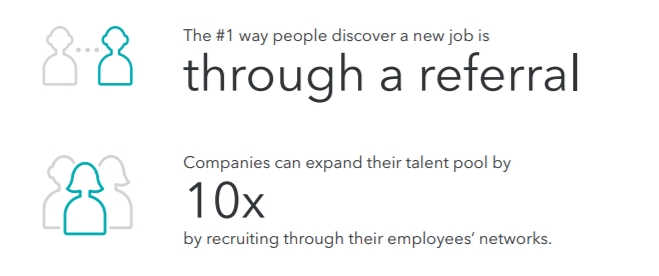 Source: LinkedIn
Source: LinkedIn
A referral program is a deliberate recruitment strategy rewarding people for referring suitable, qualified candidates from their pool of contacts. They are often offered cash or prize incentives if the candidate is hired and remains at the job for a specified amount of time (i.e. three months or any other time period specified in the terms of the program). In high paychecks jobs, the employee typically receives part of the bonus on the day the candidate is hired and receives a further payment at the end of the probationary period. In some organizations, the payment is made in full on the day the new hire starts working. According to HireClix research (via HR Daily Advisor), “over 80% of companies with referral programs pay cash bonuses averaging over $1,000 to employees who refer successful candidates.”
Why referral programs and tech are like peanut butter and jam
They simply have to go together. Why?
As it turns out, referral programs are especially valuable in industries:
– with a shortage of qualified candidates where most candidates are passive. Only 5% of developers are not employed and looking for work according to Stack Overflow, so tech meets this criterion
– where attrition rates are typically high. As LinkedIn reports, in 2017 the software industry had a turnover rate higher than any other sector at 13.2% (ouch). Another definite “yes” because tech meets this criterion
Told ya. Like peanut butter and jelly.
Why do referral programs work so well?
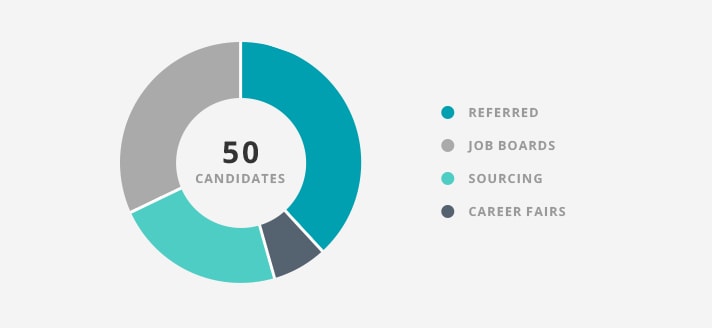 Source: Workable
Source: Workable
Referrals are a powerful sales & marketing tool increasing the likelihood to purchase. As an example, customers are four times more likely to buy when referred by a friend (Nielsen).
The good news is that referrals are equally powerful when it comes to recruitment. The reason employee referrals work is pretty straightforward. It’s because they’re based on trust. We trust people we know more than those we don’t. We also tend to believe that people we are on good terms with don’t want to do us harm. If they have a great opinion of a given organization (especially if it’s their employer and they have the first-hand experience), we’re likely to believe that it really is a good place to work.
The benefits of referrals are manifold and they actually start already in the sourcing stage. As an example, knowing employees from your organization increases your chances of a positive outreach result. According to LinkedIn data, “candidates are 46% more likely to accept inMails if they’re connected to your employees”.
What is more, recommendations of employers which often lead to referrals are frequently made in conversation, which makes them natural. You might be tempted to think that because employee referral programs are based on incentives, the quality of candidates is low, but it’s actually the opposite. Only 6% of people refer others to get money or recognition, with 35% doing it to help their friends and 32% doing it to help the company.
Do great people really know great people?
 In order to answer this question, we must first look at the way we choose our friends. We often do that based on similarity because it feels good to spend time with people who think and act the way we do. To what extent? According to a recent Dartmouth College study, we’re inclined to choose our mates based on neural response similarity to real-world stimuli, which is strongest for friends. The study examined MRIs of students and it found that “friends had the most similar neural activity patterns” in response to video clips.
In order to answer this question, we must first look at the way we choose our friends. We often do that based on similarity because it feels good to spend time with people who think and act the way we do. To what extent? According to a recent Dartmouth College study, we’re inclined to choose our mates based on neural response similarity to real-world stimuli, which is strongest for friends. The study examined MRIs of students and it found that “friends had the most similar neural activity patterns” in response to video clips.
We also tend to choose people we often cross paths with, which is why acquaintances or colleagues from school or previous jobs are referred most frequently.
Is all this good news for recruiters? Definitely. Look at the networks of your top performers and you might just find the perfect match.
Referral program benefits
Referral programs come with benefits for both the employees and the job applicants. Here are the most significant ones.
-
Targeting passive candidates
Developers change roles frequently as about half of them has “taken a new job within the past two years.” This means that the majority of developers are passive candidates but most of them (over 75%) are open to or looking for new opportunities. To hire them is to essentially make them resign from a job they’re currently doing. If there’s a way to help them feel at ease while doing so, it’s definitely through the recommendations from people they trust.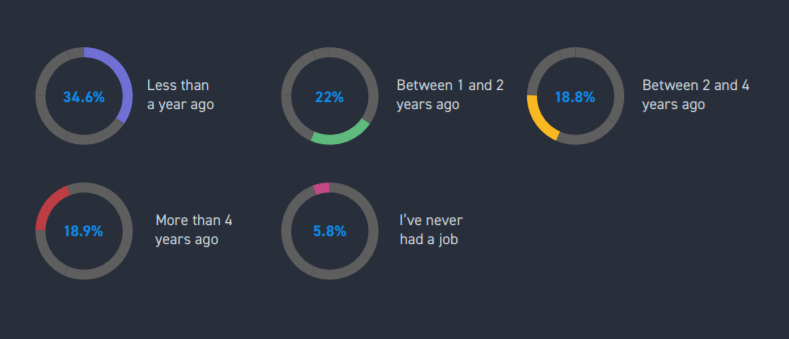
Source: Stack Overflow
-
A higher Quality of Hire
Research shows that most hires are made from referrals (SilkRoad) and that these hires typically come with a lower turnover rate. In fact, 78% of respondents to the 2018 Entelo Recruiting Trends Report “agreed that employees make the best recruiters, naming employee referrals their most successful source-of-hire”.
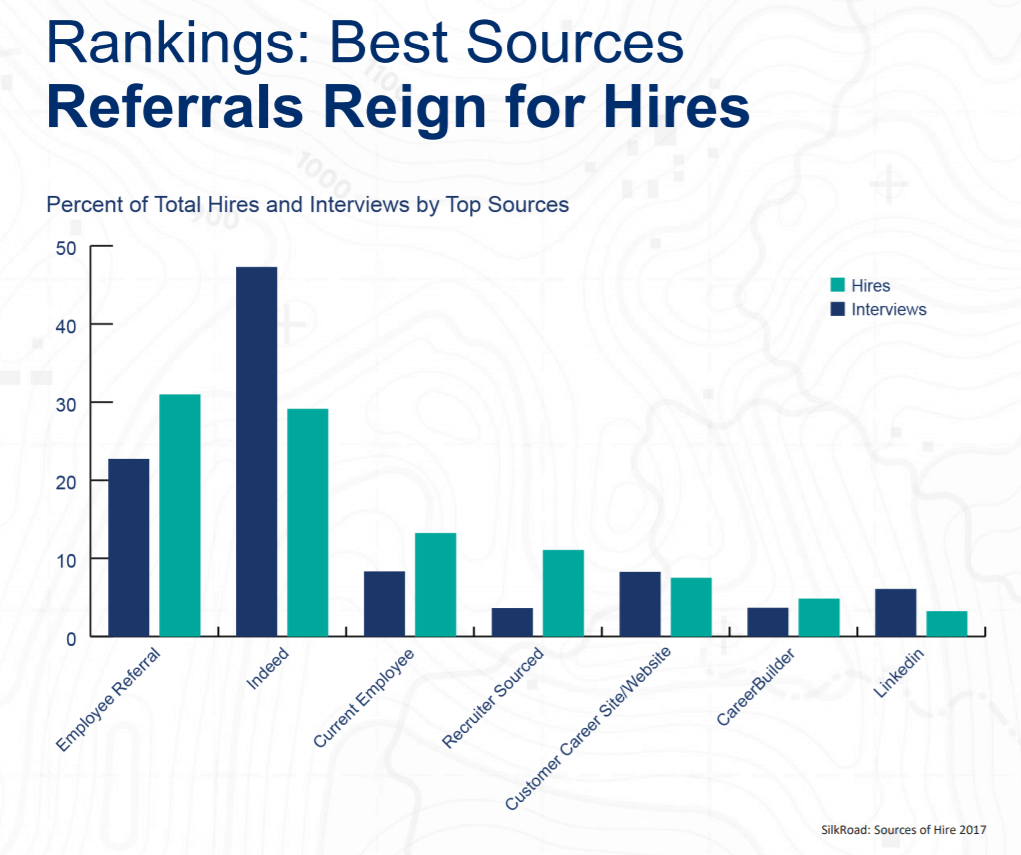 Source: SilkRoad
Source: SilkRoad
Similarly, a study by Jobvite (via Undercover Recruiter) has found that 8.6 out of 10 survey respondents felt that referrals were the top source for quality hires.
-
A shorter Time to Hire and faster onboarding
Referred candidates take the shortest to recruit, with the average reaching 29 days as compared to 39 days via job boards and 55 via career sites (Jobvite via Undercover Recruiter). In many cases, the referring party is invested in the success of the referred candidate and they typically help them settle down which speeds up the process to a large extent.
 Source: Jobvite via Undercover Recruiter
Source: Jobvite via Undercover Recruiter
-
Higher retention rate
According to Jobvite (via Undercover Recruiter), referred employees typically have greater job satisfaction and tend to stay longer at the company, beating any other source of hire.
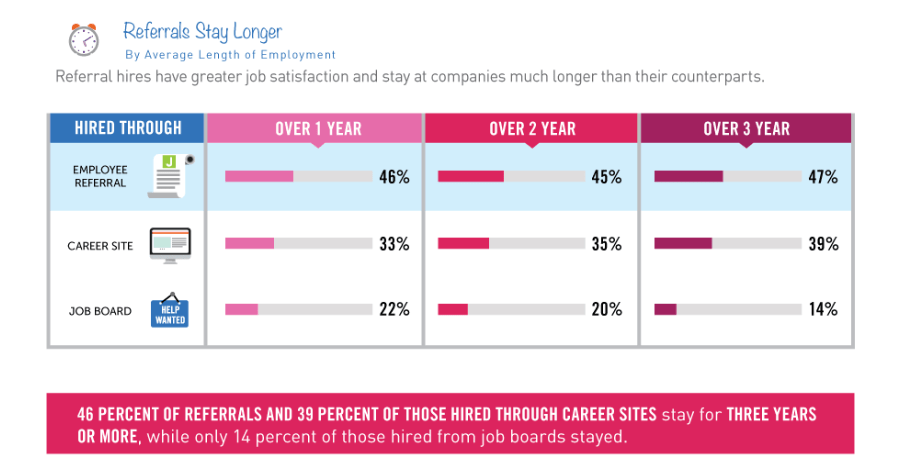 Source: Jobvite via Undercover Recruiter
Source: Jobvite via Undercover Recruiter
Fun fact: employees who referred a successful candidate typically stay around for longer, too.
-
Maintaining company culture
70% of employers believe that referrals produce a better fit in terms of culture and company values in comparison to other sources of hire. Company culture is important for just about any industry and tech is no exception. A word of caution at this point is to remember that you shouldn’t build homogeneous teams but rather welcome diversity because it fosters productivity. A study by McPherson, Smith-Lovin, and Cook entitledBirds of a Feather: Homophily in Social Networks found that people’s networks tend to be homogenous. This means that you have to look for ways to welcome candidates from all backgrounds, including the underrepresented ones.
READ MORE: 10 steps to hire more women in tech
How to build a referral program in IT: tips
According to HireClix research (via HR Daily Advisor), “71% of companies have formal referral programs. Yet, only 2% of those companies report actually meeting their referral hiring goals.” Here’s what you can do to increase your chances of seeing excellent results.
1. Determine your goal
Start at the very beginning and figure out what you want to achieve. Would you like to improve your diversity? Grow a specific area of your company like the sales or the dev team? Or maybe target employees of a company known for great tech talent? Like any activity designed to bring you growth, your referral program has to start at the drawing board.
Take a look at Pinterest’s approach to employee referrals. Their aim was to diversify their engineering referrals and simultaneously increase their quantity. The company doesn’t incentivize their referrals and still gets excellent results from “prompting engineers to refer candidates from underrepresented backgrounds.” Results? During the period of the challenge, Pinterest saw a “24 percent increase in the percent of women referred and a 55x increase in the percentage of candidates from underrepresented ethnic backgrounds.”
For your employee referral program to be viable, you should provide your employees with a summary of selling points for what it’s like to work for the organization, but to be fair, most employees know what they value in their employer most and that’s what they’ll want to communicate.
2. Focus on passive candidates
Your referral program has to deliberately target passive candidates because in most cases they don’t find themselves looking for jobs. That’s exactly the case with developers who typically have projects lined up.
3. Look at your top performers
Great people know great people. When making a new hire, consider asking your most successful employees whether they know someone who they believe can perform at the job and who they’d like to work with.
4. Communicate your open positions internally
Make sure you share job openings both externally and internally to maximize the potential of your employees’ networks. Write clear and informative job descriptions your employees can use.
5. Keep the process simple and mobile-friendly
Your referral program should be as simple as possible and mobile-friendly. Recommending a colleague should take no more than a few clicks. After all, you shouldn’t ask your employees to do your job but simply point you to the right person and put in a good for you if they feel like it.
Collect only the data that is essential to initializing contacts, such as first and last name, email address or phone number. For companies using ATS solutions, referral programs are pretty easy to implement. They typically allow you to send job openings to some or all employees as well as track who referred the candidates entering your pipeline.
6. Incentivize
Remember that only 6% of employees make a referral because they want to get the money or recognition, so as it turns out, it’s not all always about the money. Sometimes praising people in public and letting them know you appreciate their contribution is more than enough. You probably have a feeling of what sort of an incentive your team members would value most and if you don’t, you can always ask. If you have a strong company culture, you may find that people refer candidates to make the company grow because they really care about it more than anything else in the workplace.
7. Keep employees and candidates informed
Shoot regular updates at people at the right moments in the recruitment process to keep both parties engaged. However, bear in mind that involving the person who made the referral too much can be detrimental to your referral program long term. As an example, bringing them to the interview may result in scheduling difficulties and frustration of both parties involved (especially if the interview doesn’t go very well). Weigh down the pros and cons and stick to your decision to make the process objective and fair to every candidate.
8. Give people an idea of who they’d be working with
A great tip from Workable is to namecheck the person’s manager in the ad so they can get an idea of who they’d be working with. This allows them to look through their LinkedIn profile, their social media accounts, and in the case of developers, their Stack Overflow or GitHub activity.
We need a designer to join @denisewilton on our product marketing team in #London – http://t.co/x86lmtFn8P pic.twitter.com/EAYs21vi2a
— Workable (@Workable) September 30, 2015
Conclusion
Although referrals don’t provide you with the highest amount of applications, their quality definitely makes up for their volume. In high paycheck industries such as tech, tapping into the networks of your current employees can save you a tremendous amount of time and money. The ability to recognize the value of referred candidates results in introducing an effective employee referral program which is structured, replicable, and optimizable. The referred hires tend to thrive long term so there really is a lot at the stake.




